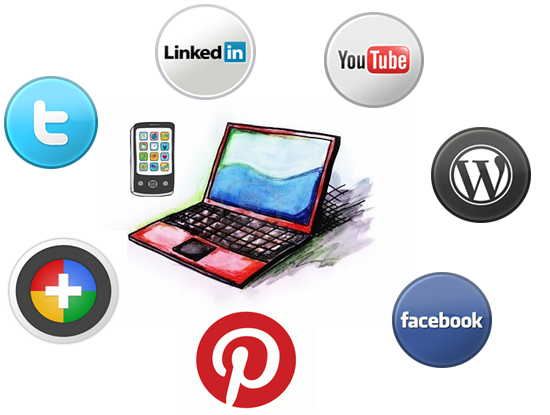Writing may not seem like a technology compared to the modern day revelation of smartphones, tablets, and laptops, but writing can be seen as the original/foundation technology. As Ong (1982) points out,
“…we find it difficult to consider writing to be a technology as we commonly assume printing and the computer to be. Yet writing is a technology, calling for the use of tools and other equipment: styli or brushes or pens, carefully prepared surfaces such as paper, animal skins, strips of wood, as well as inks or paints, and much more” (Ong , p. 82).
Writing can be considered a technology because it requires a person to enable external resources and execute an action. All the gadgets of today make writing seem like a simple and mundane technology, but the reality is that it holds the foundation for modern technologies and is perhaps the most complex to master. “Writing is in a way the most drastic of the three technologies. It initiated what print and computers only continue, the reduction of dynamic sound to quiescent space, the separation of the word from the living present, were alone spoken words can exist” (Ong, p. 82). These factors combined with the permanency of writing and the potential anonymity makes writing one of the most ancient and yet, advanced forms of technology.
Disconnected from the Source
One of the biggest reasons that writing can be labeled as a technology is that it provides a way to disconnect a source from a piece of information. As Ong (1982) states, “Writing separates the knower from the known and thus sets up conditions for ‘objectivity’ in the sense of personal disengagement or distancing” (Ong, p. 46). This prevents the source from manipulating a piece of information or developing new meaning from the original fact. This also creates a situation where information is no longer wrapped in context. “Writing establishes what has been called ‘context-free’ language (Hirsch 1997, p. 21-3, 26) or ‘autonomous’ discourse (Olson, 1980), discourse which cannot be directly questioned or contested as oral speech can be because written discourse has been detached from its author” (Ong, 78). Information is no longer subject to the context of the source (i.e. emotions, location) and is available in a “what your see is you’re your get” format. A written piece is something that lacks the same life like fluidity of orality because it is transformed into a permanent and unchangeable fixture.
There is a paradox to this type of technology; written information loses the potential for influence, but also gains the potential for infinite effect. As Ong states, “The paradox lies in the fact that the deadness of the text, its removal from the living human life world, its rigid visual fixity, assures its endurance and its potential for being resurrected into limitless living contexts by a potentially infinite number of living readers” (Ong 1977, p. 230-71). This paradox is one of the core attributes that make up our modern day technologies like smartphones, laptops, and tablets. Information that is read and distributed through laptops or smartphones has the potential to reach an infinite audience and remain available for extended lengths of time
Writing can also provide the ability to disconnect the memory from the information. Ong cites Havelock’ description of this as “… the text frees the mind of conservative functions on itself, the text frees the mind of conservative tasks, that is, of its memory work, and thus enables the mind to turn itself to new speculation (Havelock 1963, P. 254-305).” When modern day society thinks of technology they think of devices that allow us to perform tasks with a greater deal of ease. Writing is a prime example of this; the mind is freed from the burden of memorization, which opens the door for possible advancements in thinking.
Permanency
The second attribute of writing that constitutes it as a technology is its permanency. This is something that is works hand in hand with the previous idea of disconnecting from the source. Writing can be powerful and devastating because of its lack of change. When writing is created and published, it becomes a permanent fixture until that document seizes to exist. Writing can hold true information or false information; fabrications or truthful recounts. Either way, a written item holds an unwavering permanence. “After absolutely total and devastating refutation, it says exactly the same thing as before. This is one reason why ‘the book says’ is popularly tantamount to ‘it is true’. It is also one reason why books have been burnt. A text stating what the whole world knows is false will state falsehood forever, so long as the text exists. Texts are inherently contumacious” (Ong, 79). An example of this is the novel, A Million Little Pieces. Since publication, the author has confessed that much of this biography is false. Even though our society now knows that this information is incorrect, the written book still remains on book shelves and in eBooks. No matter how much we refute the book, the information remains the exact same. This established permanence cannot be replicated by speech because false information quickly becomes extinct, undoubtedly because the idea of liars holds a negative connotation and because speech connects the source with the information, few people will continue to provide false information.
Writing has a long and famed history in multiple cultures and across multiple centuries. It is believed that the first form of a pencil came from the ancient Romans who used a tiny brush that they called penicillus (meaning “a little tail”) to write on papyrus. (“History of Pencils”, 2013). While writing may hold an ancient history, it can still be seen as a technology created to alter the original information system, speech. Ong’s concept of writing as a technology holds a great amount of truth. Writing has redefined information processing and opened the door for modern day information transferring technologies
References
Havelock, E. A. (1963). Preface to Plato. Cambridge, MA: Bellknap Press of Harvard University Press.
History of Pencils (2013). Retrieved from http://www.berol.co.uk/historyofpencils.html
Ong, W. J. (1977a). Typographic rhapsody: Ravisius Textor, Zwinger, and Shakespeare. In W. J. Ong, Interfaces of the word: Studies in the evolution of consciousness and culture (pp. 146-188). Ithaca and London: Cornell University Press.
Ong, W.J. (1982).“Some psychodynamics of Orality”. In W.J. Ong, Orality and Literacy: The Technologizing of the Word (pp.31-77). London and New York: Methuen.
Ong, W.J. (1982)“Writing restructures Consciousness” In W.J. Ong, Orality and Literacy: The Technologizing of the Word (pp.78-116). London and New York: Methuen.


